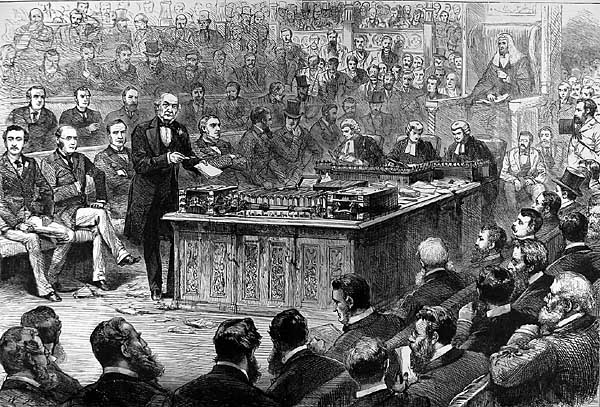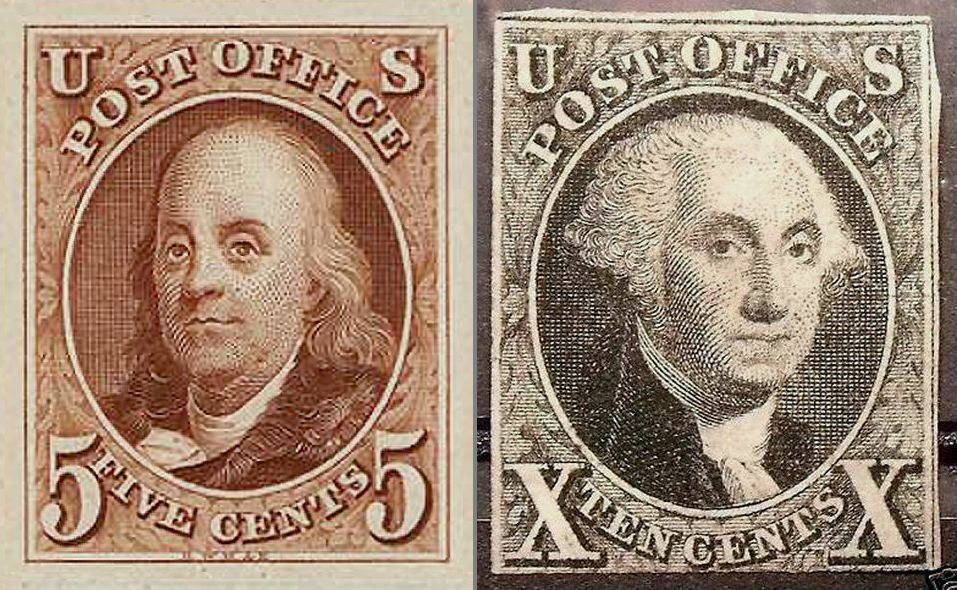|
John Macdonald Cameron
John Macdonald Cameron (8 April 1847 – 3 September 1912) was a Scottish chemist and Liberal Party politician who sat in the House of Commons from 1885 to 1892. Cameron was the only son of Lachlan Cameron of Saltburn Ross and his wife Christina Macdonald of Brackla, Nairnshire. He was educated at Sharp's Institution, Perth and entered the Inland Revenue in 1866. In 1870 he gained a Board of Inland Revenue scholarship in Science and studied at the Royal School of Mines winning 1st class prize in Organic and Inorganic Chemistry. He was a chemist in the Inland Revenue Laboratory at Somerset House from 1870 to 1874 and then became an instructor in the Chemical Research Laboratory at the Royal School of Mines. In 1879 he began in business as an assayer and mining expert. He contributed to a geological paper on a possible new mineral from Scotland in 1880. His reports on minerals include: from India, "Quartz outcrops of Travancore Lower India"; from Mexico, "The copper, silver-lead, and ... [...More Info...] [...Related Items...] OR: [Wikipedia] [Google] [Baidu] |
Liberal Party (UK)
The Liberal Party was one of the two Major party, major List of political parties in the United Kingdom, political parties in the United Kingdom, along with the Conservative Party (UK), Conservative Party, in the 19th and early 20th centuries. Beginning as an alliance of Whigs (British political party), Whigs, free trade–supporting Peelites and reformist Radicals (UK), Radicals in the 1850s, by the end of the 19th century it had formed four governments under William Ewart Gladstone, William Gladstone. Despite being divided over the issue of Irish Home Rule Movement, Irish Home Rule, the party returned to government in 1905 and won a landslide victory in the 1906 United Kingdom general election, 1906 general election. Under Prime Minister of the United Kingdom, prime ministers Henry Campbell-Bannerman (1905–1908) and H. H. Asquith (1908–1916), the Liberal Party passed Liberal welfare reforms, reforms that created a basic welfare state. Although Asquith was the Leader of t ... [...More Info...] [...Related Items...] OR: [Wikipedia] [Google] [Baidu] |
Liberal Unionist Party
The Liberal Unionist Party was a British political party that was formed in 1886 by a faction that broke away from the Liberal Party. Led by Lord Hartington (later the Duke of Devonshire) and Joseph Chamberlain, the party established a political alliance with the Conservative Party in opposition to Irish Home Rule. The two parties formed the ten-year-long coalition Unionist Government 1895–1905 but kept separate political funds and their own party organisations until a complete merger between the Liberal Unionist and the Conservative parties was agreed to in May 1912.Ian Cawood, ''The Liberal Unionist Party: A History'' (2012) History Formation The Liberal Unionists owe their origins to the conversion of William Ewart Gladstone to the cause of Irish Home Rule (i.e. limited self-government for Ireland). The 1885 general election had left Charles Stewart Parnell's Irish Nationalists holding the balance of power, and had convinced Gladstone that the Irish wanted and de ... [...More Info...] [...Related Items...] OR: [Wikipedia] [Google] [Baidu] |
UK MPs 1885–1886
The United Kingdom of Great Britain and Northern Ireland, commonly known as the United Kingdom (UK) or Britain, is a country in Europe, off the north-western coast of the continental mainland. It comprises England, Scotland, Wales and Northern Ireland. The United Kingdom includes the island of Great Britain, the north-eastern part of the island of Ireland, and many smaller islands within the British Isles. Northern Ireland shares a land border with the Republic of Ireland; otherwise, the United Kingdom is surrounded by the Atlantic Ocean, the North Sea, the English Channel, the Celtic Sea and the Irish Sea. The total area of the United Kingdom is , with an estimated 2020 population of more than 67 million people. The United Kingdom has evolved from a series of annexations, unions and separations of constituent countries over several hundred years. The Treaty of Union between the Kingdom of England (which included Wales, annexed in 1542) and the Kingdom of Scotland in 170 ... [...More Info...] [...Related Items...] OR: [Wikipedia] [Google] [Baidu] |
Scottish Liberal Party MPs
Scottish usually refers to something of, from, or related to Scotland, including: * Scottish Gaelic, a Celtic Goidelic language of the Indo-European language family native to Scotland *Scottish English *Scottish national identity, the Scottish identity and common culture * Scottish people, a nation and ethnic group native to Scotland *Scots language, a West Germanic language spoken in lowland Scotland *Symphony No. 3 (Mendelssohn), a symphony by Felix Mendelssohn known as ''the Scottish'' See also *Scotch (other) *Scotland (other) *Scots (other) *Scottian (other) *Schottische The schottische is a partnered country dance that apparently originated in Bohemia. It was popular in Victorian era ballrooms as a part of the Bohemian folk-dance craze and left its traces in folk music of countries such as Argentina ("chotis"Span ... * {{disambiguation Language and nationality disambiguation pages ca:Escocès ... [...More Info...] [...Related Items...] OR: [Wikipedia] [Google] [Baidu] |
1912 Deaths
Year 191 ( CXCI) was a common year starting on Friday (link will display the full calendar) of the Julian calendar. At the time, it was known as the Year of the Consulship of Apronianus and Bradua (or, less frequently, year 944 ''Ab urbe condita''). The denomination 191 for this year has been used since the early medieval period, when the Anno Domini calendar era became the prevalent method in Europe for naming years. Events By place Parthia * King Vologases IV of Parthia dies after a 44-year reign, and is succeeded by his son Vologases V. China * A coalition of Chinese warlords from the east of Hangu Pass launches a punitive campaign against the warlord Dong Zhuo, who seized control of the central government in 189, and held the figurehead Emperor Xian hostage. After suffering some defeats against the coalition forces, Dong Zhuo forcefully relocates the imperial capital from Luoyang to Chang'an. Before leaving, Dong Zhuo orders his troops to loot the tombs of th ... [...More Info...] [...Related Items...] OR: [Wikipedia] [Google] [Baidu] |
1847 Births
Events January–March * January 4 – Samuel Colt sells his first revolver pistol to the U.S. government. * January 13 – The Treaty of Cahuenga ends fighting in the Mexican–American War in California. * January 16 – John C. Frémont is appointed Governor of the new California Territory. * January 17 – St. Anthony Hall fraternity is founded at Columbia University, New York City. * January 30 – Yerba Buena, California, is renamed San Francisco. * February 5 – A rescue effort, called the First Relief, leaves Johnson's Ranch to save the ill-fated Donner Party (California-bound emigrants who became snowbound in the Sierra Nevada earlier this winter; some have resorted to survival by cannibalism). * February 22 – Mexican–American War: Battle of Buena Vista – 5,000 American troops under General Zachary Taylor use their superiority in artillery to drive off 15,000 Mexican troops under Antonio López de Santa Anna, defeating the Mexicans the next day. * ... [...More Info...] [...Related Items...] OR: [Wikipedia] [Google] [Baidu] |
President Of The Australian Senate
The President of the Senate is the presiding officer of the Australian Senate, the upper house of the Parliament of Australia. The position is provided for by Section 17 of the Constitution of Australia. The Senate elects one of its members as president at the start of each new term, or whenever the position is vacant. This is usually—though not necessarily—a member of the party or coalition that holds the most seats in the Senate. The largest party in the Senate is not always the governing party, as government is determined by the House of Representatives. The President of the Senate and the Speaker of the House of Representatives may consequently be from different parties. The President of the Senate's primary task is to maintain parliamentary procedure in the chamber during legislative sessions. Unlike the Speaker of the House, the President of the Senate votes as an ordinary member during general debate, and has no casting vote in the case of a tie (a casting vot ... [...More Info...] [...Related Items...] OR: [Wikipedia] [Google] [Baidu] |
Magnus Cormack
Sir Magnus Cameron Cormack Order of the British Empire, KBE (12 February 1906 – 26 November 1994) was an Australian politician. He was a member of the Liberal Party of Australia, Liberal Party and served multiple terms as a Australian Senate, Senator for Victoria (Australia), Victoria (1951–1953, 1962–1978), including as President of the Senate (Australia), President of the Senate from 1971 to 1974. Cormack was born in the Scottish Highlands and came to Australia as a child. He grew up in Adelaide and worked as a production manager with Holden for several years, later farming near Apsley, Victoria. During World War II he served in the New Guinea campaign and attained the rank of major. Cormack's first term in the Senate lasted only two years, during which he notably opposed the Menzies Government (1949–1966), Menzies Government's attempt to ban the Communist Party of Australia, Communist Party. After several unsuccessful candidacies, he was re-elected at the 1961 Austral ... [...More Info...] [...Related Items...] OR: [Wikipedia] [Google] [Baidu] |
Balintraid
Balintraid ( gd, Baile na Tràghad) is an industrial settlement, which was built largely in the 1970s with the growth of the North Sea oil industry in Scotland, lies on the north east corner of Nigg Bay, in the Cromarty Firth in Ross-shire, Scottish Highlands and is in the Scottish council area of Highland. Balintraid pier - probably the oldest pier on the Cromarty Firth, was built by Thomas Telford in 1824. The village of Invergordon lies less than 1 miles to the west, with the village of Barbaraville Barbaraville ( gd, An Cladach) is a small settlement on the north shore of Nigg Bay in the Cromarty Firth in the Highland (council area), Highland council area of Scotland. Housing dates from 1820 on when local people were allowed to build on p ... 1 mile to the west. References Populated places in Ross and Cromarty {{Highland-geo-stub ... [...More Info...] [...Related Items...] OR: [Wikipedia] [Google] [Baidu] |
Tarakan
Tarakan is an island and the largest city of the Indonesian province of North Kalimantan. The island city is located in northern Borneo, midway along the coast of the province. The city boundaries are co-extensive with the island (including a couple of small islands off the coast of the Tarakan Barat District). Once a major oil-producing region during the colonial period, Tarakan had great strategic importance during the Pacific War and was among the first Japanese targets early in the conflict. It is the sole city within the newly established (in 2012) Indonesian province of North Kalimantan. According to Statistics Indonesia, the city had a population of 193,370 at the 2010 Census and 242,786 inhabitants at the 2020 Census. Geography The city is located on Tarakan island, which composed of of land. 27.5% of the city is composed of podzol soil and 57.63% latosol soil. The city is located between above sea level. History Etymology According to legends, native Tidungs e ... [...More Info...] [...Related Items...] OR: [Wikipedia] [Google] [Baidu] |
Sydney Mint
The Sydney Mint in Sydney, New South Wales, Australia, is the oldest surviving public building in the Sydney central business district. Built between 1811 and 1816 as the southern wing of the Sydney Hospital, it was then known as the ''Rum Hospital''. In 1854 a Mint (coin), mint was established on the site with the hospital building used to house mint staff as well as providing a residence for the Deputy Mint Master. A coining factory was built at the rear. Both of these structures have exceptional heritage significance and have been associated with major events in the colonial history of New South Wales. Located in Sydney's central business district at 10 Macquarie Street, Sydney, Macquarie Street, it is near many other famous Australian historical buildings including Hyde Park Barracks, Sydney, Hyde Park Barracks, St. James Church, Sydney, St James' Church and Parliament House, Sydney, Parliament House. The building is now the head office of the Historic Houses Trust of New Sou ... [...More Info...] [...Related Items...] OR: [Wikipedia] [Google] [Baidu] |
Master Of The Mint
Master of the Mint is a title within the Royal Mint given to the most senior person responsible for its operation. It was an important office in the governments of Scotland and England, and later Great Britain and then the United Kingdom, between the 16th and 19th centuries. Until 1699, appointment was usually for life. Its holder occasionally sat in the cabinet. During the interregnum (1643–1660) the last Master of the Mint to King Charles, Sir Robert Harley, transferred his allegiance to Parliament and remained in office. After his death in 1656 Aaron Guerdon was appointed. In 1870 the role was amalgamated into the office of the Chancellor of the Exchequer, making the Chancellor, by virtue of his position, the Master of the Mint. The duty of running the mint was given to the Deputy Master of the Mint; who is now the mint's Chief Executive. Masters of the Mint in England *1331 Richard de Snowshill and Richard of Grimsby *1351–? Henry de Bruselee and John Chichester Go ... [...More Info...] [...Related Items...] OR: [Wikipedia] [Google] [Baidu] |
.png)




_op_het_eiland_Tarakan_TMnr_60018735.jpg)